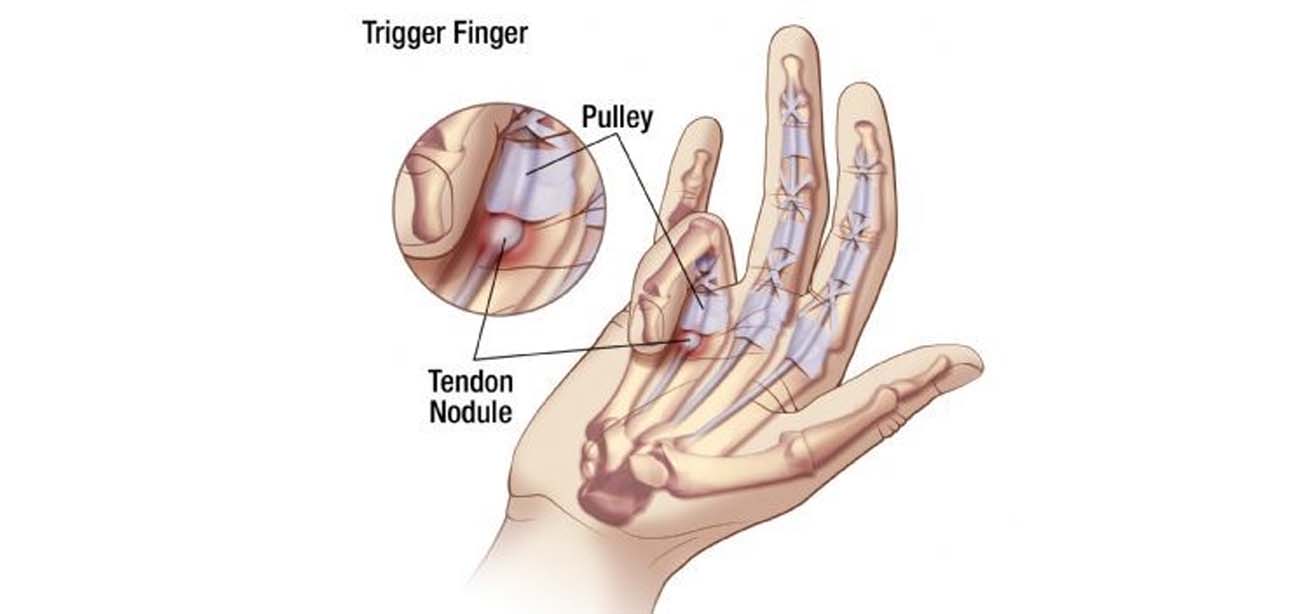
What Is Trigger Finger?
Trigger finger is a condition when a finger or thumb briefly locks when you try to extend it. It is a problem with the flexor tendons. Tendons are strong bands of connective tissue that attach muscles to bones. When muscles contract, they pull on tendons, which makes your joints move. Flexor tendons are long tendons that control finger and thumb movements. Flexor tendons run from your forearm muscles, through your wrists, and attach to the bones in your fingers and thumb. When you use your fingers, these tendons slide through a protective sheath surrounding them.
Trigger finger occurs when a flexor tendon becomes irritated and inflamed. Over time, the tendon can thicken and the space within the surrounding sheath can constrict. This causes the tendon to get stuck briefly at the opening of the sheath. As a result, the finger or thumb will catch in the flexed position before popping out straight. Inflammation of the tendon sheath—tenosynovitis—can also cause trigger finger.
Trigger finger is not a medical emergency. However, you should seek prompt medical care if you notice a finger catching with movement. Early treatment may simply involve rest and a special splint for trigger finger. The longer you let it go without treatment, the less likely it is that nonsurgical treatments will work.
What Causes Trigger Finger?
Any activity that stresses or irritates the finger’s flexor tendons can lead to trigger finger. Inflammation of the tendon sheath can also occur. The activity is often a repetitive movement that involves repeatedly flexing (bending) the finger. In some cases, the cause of inflammation is not clear.
Certain factors increase the likelihood of developing trigger finger. However, not all people with risk factors will get it. Risk factors for trigger finger include:
- Being between the age of 40 and 60 years
- Being female
- Having diabetes, gout, and inflammatory forms of arthritis, such as rheumatoid arthritis
- Injuring the palm of the hand or base of the finger or thumb
- Performing activities that require excess or repetitive gripping or grasping
How is trigger finger treated?
The trigger finger treatment you need will depend on the severity of the problem. Mild cases of trigger finger may respond to home treatments. This includes:
- Resting the finger and hand
- Stretching the hand with trigger finger exercises to maintain mobility
- Taking over-the-counter NSAIDs (nonsteroidal anti-inflammatory drugs), such as ibuprofen (Advil, Ibuprofen) and naproxen (Aleve)
- Wearing a trigger finger splint at night
For persistent cases, your doctor may recommend a corticosteroid injection. However, these treatments are less likely to work when you have had trigger finger for a long time. Delaying treatment can contribute to this treatment failure. If two injections fail to resolve trigger finger, your doctor may suggest trigger finger surgery or trigger finger release. This is an outpatient surgery to open the tendon sheath and relieve pressure on the tendon. Recovery takes a few weeks.

Dr. Atul Patil
MBBS MS (Ortho) DNB MNAMS
Consultant Orthopaedic
Spine & Joint Replacement Surgeon
View Full Profile Call For Appointment
Call For Appointment